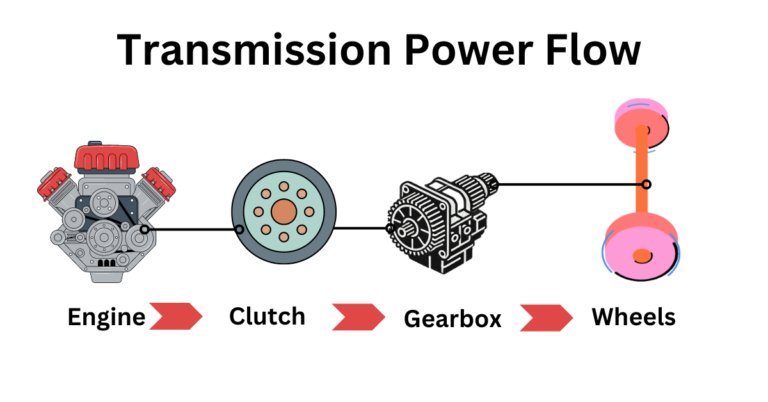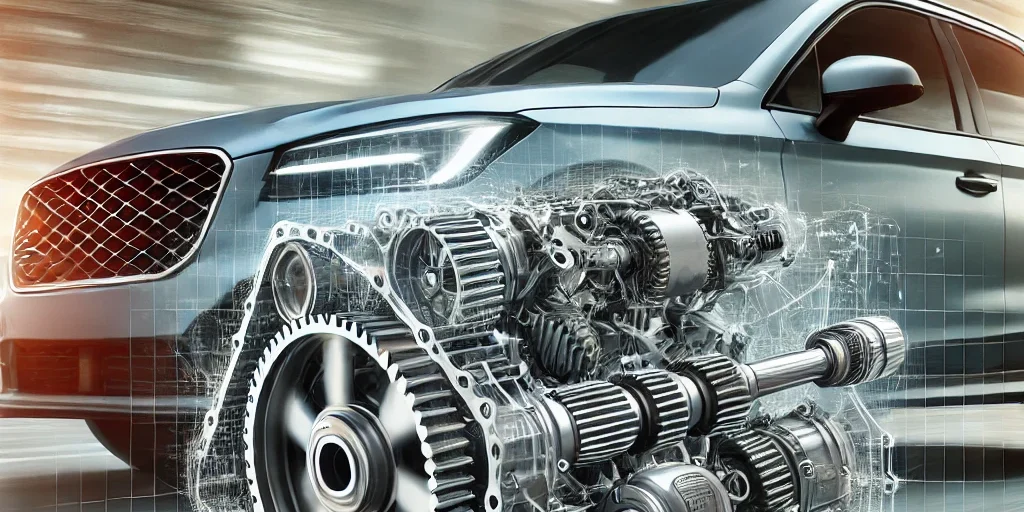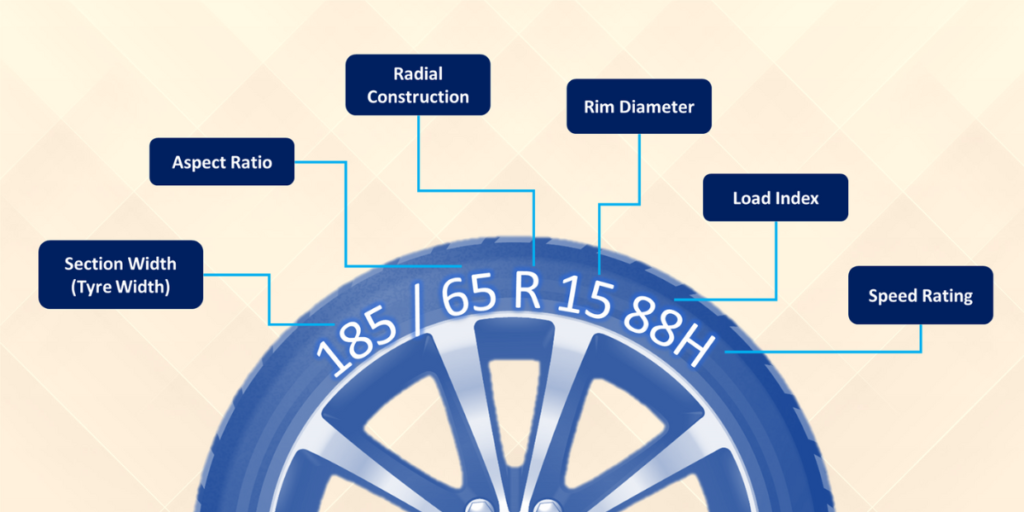Why Every Car Needs a Gearbox: A Simple Explanation
Ever wondered why your car needs a gearbox? It’s not just a random piece of machinery; the gearbox plays a vital role in making sure your car runs smoothly and efficiently. By managing the engine’s power, it helps you drive at different speeds while keeping everything running comfortably. In this post, we’ll explore why every car relies on a gearbox and how it works to enhance your driving experience.
Introduction
Every car relies on a gearbox, but what exactly does it do? In simple terms, a gearbox manages the power generated by the car’s engine, ensuring that it’s transmitted efficiently to the wheels. It allows the driver to control the vehicle’s speed and torque, adapting to different driving conditions, whether you’re cruising on a highway or navigating through city traffic.
The reason a gearbox is necessary lies in the nature of car engines. Engines produce power at a high speed (RPM), but this power needs to be adjusted to the lower speeds required by the wheels. The gearbox makes this adjustment possible by using a series of gears to increase or decrease torque as needed. This ensures that the car can accelerate smoothly, handle different terrains, and operate efficiently across a wide range of speeds.
Without a gearbox, the car would be stuck at a single speed and unable to function properly under varying conditions. The gearbox, therefore, is crucial not just for performance, but also for the safety and comfort of the driving experience. In this post, we’ll explore the role of the gearbox in more detail, explaining why it’s an indispensable component in every car.
What is Gearbox?

A gearbox, also known as a transmission, is a mechanical device that plays a critical role in any vehicle’s drivetrain. It manages the power produced by the engine and controls how that power is distributed to the wheels. By adjusting the engine’s torque and speed, the gearbox ensures that the vehicle can operate efficiently under various driving conditions.
Definition:
A gearbox consists of gears and related components that collaborate to transfer power from the engine to the wheels, allowing the vehicle to operate at different speeds and manage various loads. It essentially converts the engine’s high-speed, low-torque output into the appropriate torque and speed needed to move the car efficiently.
Components of a Gearbox:
- Gears: The primary components of a gearbox. They come in various sizes and shapes and are responsible for changing the torque and speed. Different gear arrangements can alter the output speed and torque.
- Shafts: These are rods that rotate and transmit motion and torque from one gear to another. The two main types are the input shaft, which connects to the engine, & the output shaft, which connects to the wheels.
- Bearings: These components support the shafts, enabling smooth rotation while minimizing friction.
- Synchronizers: Found in manual gearboxes, these components match the speed of the gears before they are engaged to ensure smooth shifting.
- Gear Lever: In manual transmissions, this is the stick or lever used to change gears.
- Housing: It supports the bearings and finally all loads are transferred to the housing
- Lubricant: The function of lubricant is to reduce the friction between components and maintain the temperature as well.
Function:
The main function of a gearbox is to adjust the engine’s power output so that it can be used effectively by the vehicle. When you start a car and begin to drive, the gearbox allows you to shift gears, either manually or automatically, to control the vehicle’s speed and power. At low speeds, the gearbox increases torque, making it easier to move the car from a standstill. At higher speeds, it reduces torque and increases speed, enabling the car to cruise efficiently.
In essence, the gearbox allows the engine to operate within its optimal power range while providing the necessary adjustments for acceleration, deceleration, and maintaining a steady speed. Without a gearbox, it would be nearly impossible to drive a car smoothly or efficiently.
Let's Understand with Example
et’s consider an example to understand why a gearbox is necessary when pairing with an engine, particularly in terms of managing RPM (revolutions per minute) and torque.
Scenario:
- Engine Output: The engine produces a constant 3000 RPM and 200 Nm of torque.
- Gear Ratios: The car’s gearbox has three gears with the following ratios:
- 1st Gear: 3.5:1
- 2nd Gear: 2:1
- 3rd Gear: 1:1
Without a Gearbox:
If there were no gearbox, the engine’s output would directly translate to the wheels. In this case, the wheels would always receive 3000 RPM and 200 Nm of torque, regardless of the driving situation. This would be highly inefficient, particularly at low speeds, where more torque is needed to start the car and overcome inertia.
With a Gearbox:
1st Gear (3.5:1 Ratio):
- RPM to Wheels: 3000 RPM / 3.5 = 857 RPM
- Torque to Wheels: 200 Nm * 3.5 = 700 Nm
- Explanation: In the first gear, the gearbox reduces the engine’s RPM but increases the torque significantly. This high torque is essential for getting the car moving from a standstill, such as when you start driving or climb a steep hill.
2nd Gear (2:1 Ratio):
- RPM to Wheels: 3000 RPM / 2 = 1500 RPM
- Torque to Wheels: 200 Nm * 2 = 400 Nm
- Explanation: In the second gear, the RPM increases, and the torque decreases compared to the first gear. This is useful when you’ve gained some speed and no longer need as much torque but require more speed to continue accelerating.
3rd Gear (1:1 Ratio):
- RPM to Wheels: 3000 RPM / 1 = 3000 RPM
- Torque to Wheels: 200 Nm * 1 = 200 Nm
- Explanation: In the third gear, the RPM and torque are directly transmitted from the engine to the wheels. This gear is ideal for cruising at high speeds on highways, where less torque is needed, and maintaining speed is the priority.
Conclusion:
The gearbox supports the engine to operate efficiently across different driving conditions by adjusting the RPM and torque transferred to the wheels. Without a gearbox, the car would struggle to start moving, accelerate, or maintain speed, leading to poor performance and inefficient fuel use. The gearbox enables smooth transitions between different power demands, ensuring the engine operates within its optimal range.
Why a Gearbox is Essential?
The gearbox is a essential component of any vehicle, serving multiple essential functions that make driving possible, efficient, and comfortable.
Power Transmission:
A key function of a gearbox is to efficiently transfer power from the engine to the wheels. While the engine produces power by burning fuel, the gearbox manages and distributes this power to propel the vehicle. The gearbox takes the engine’s high-speed, low-torque output and converts it into the appropriate torque and speed needed for the wheels. By adjusting the gear ratios, the gearbox ensures that the engine’s power is used effectively, whether you’re accelerating from a zero or cruising at high speeds.
Speed Control:
A gearbox allows drivers to control the vehicle’s speed and torque, which is essential for safe and responsive driving. By shifting gears, you can adjust how much power is sent to the wheels. For instance, lower gears provide more torque, which is useful for starting the car or climbing hills. Higher gears reduce torque but increase speed, which is ideal for highway driving. This ability to control speed and torque makes driving more adaptable to different conditions and ensures that the engine isn’t overworked.
Fuel Efficiency:
Gearboxes play a significant role in optimizing fuel efficiency. By allowing the engine to run within its optimal power range, a gearbox ensures that the vehicle uses fuel more efficiently. When you’re driving at a constant speed, the gearbox can shift to a higher gear, reducing engine RPMs and conserving fuel. In contrast, if you’re driving in heavy traffic or up a steep incline, the gearbox shifts to a lower gear, providing the necessary torque without wasting fuel.
Driving Comfort:
Lastly, the gearbox contributes to a smoother and more comfortable driving experience. By managing engine power and making gear shifts seamless, especially in automatic transmissions, it reduces the strain on the engine and provides a consistent, smooth ride. This is particularly important in stop-and-go traffic, where frequent gear changes are necessary. A well-functioning gearbox ensures that these changes happen smoothly, making the drive more pleasant for the driver and passengers.
In summary, the gearbox is essential not just for moving the car but for doing so in a way that is efficient, controlled, and comfortable. Without it, driving would be far less manageable and much more energy-consuming.
If you still have doubt, Comment Below !
Check out other important article as well here 🙂
Thanks for Reading.


